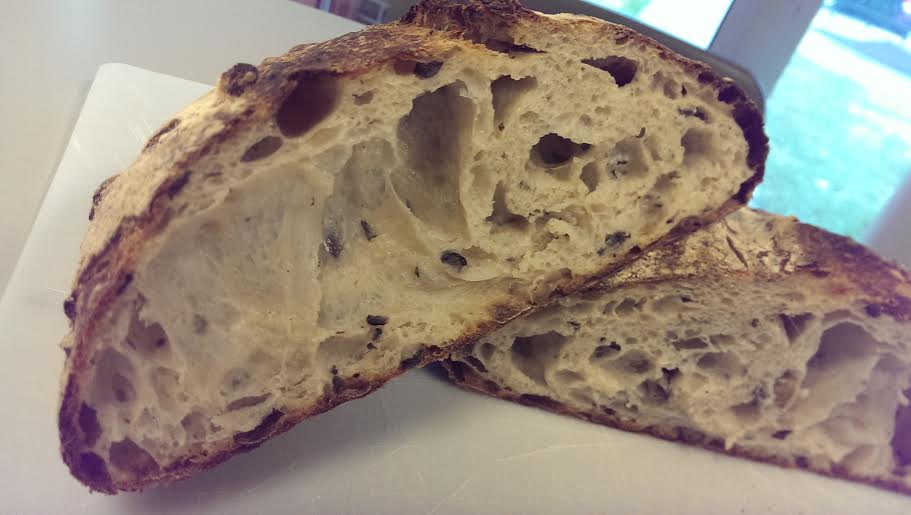Pain au Chocolat

I don't have the book in front of me, but there's a single sentence in FWSY where Forkish describes serving a traditional French version of pain au chocolat in his bakery: Not the chocolate croissant with which I was familiar, but instead a simple slice of bread with a swipe of butter and a sprinkle of dark chocolate.
That's what I served to my coworkers today, after a very long week of weather-related stress.












